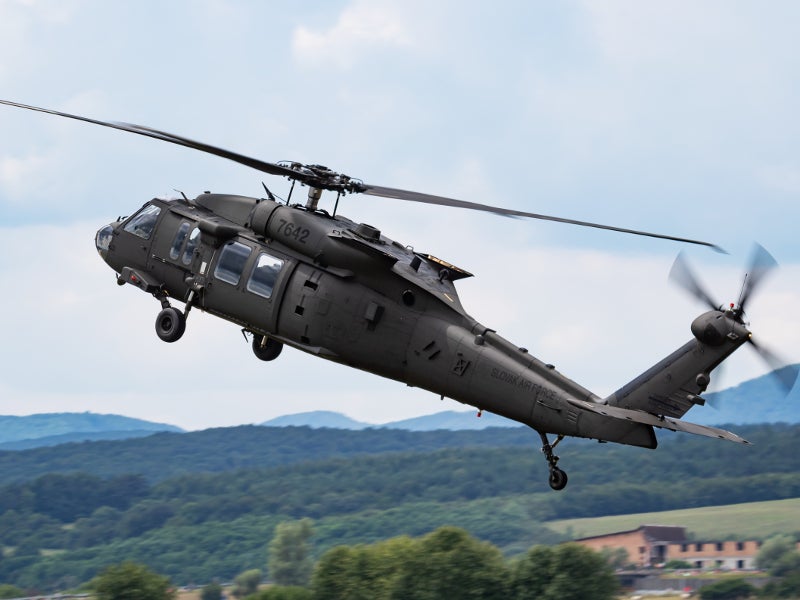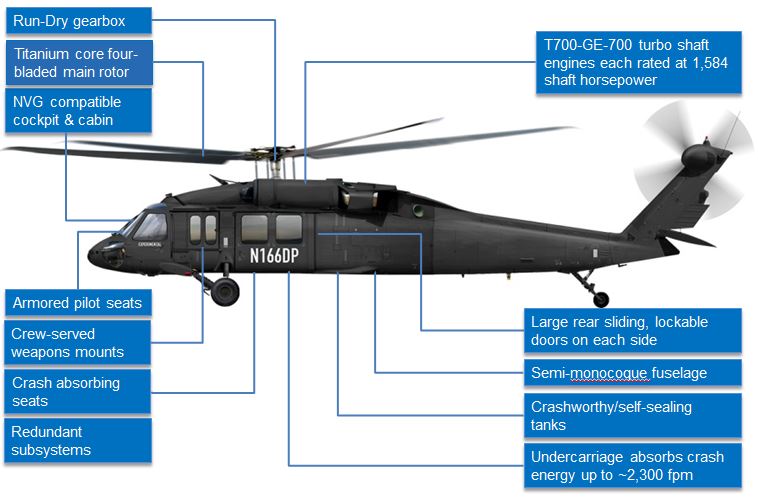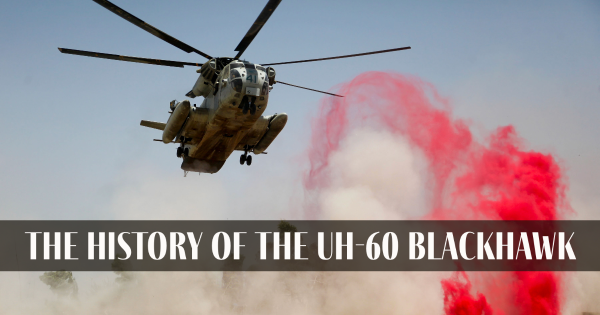Grasping the Skies: UH 60 Helicopter Maintenance Checklist
Grasping the Skies: UH 60 Helicopter Maintenance Checklist
Blog Article
Comprehending the Mechanics and Engineering Behind Uh 60 Helicopters
The UH-60 helicopter, commonly referred to as the Black Hawk, stands as a peak of modern rotorcraft modern technology, personifying a mix of durable engineering and elaborate technicians. From its creation to its present models, the evolution of this aircraft showcases a fusion of advancement and usefulness. As we peel off back the layers of the UH-60's design, a world of complex systems and thorough engineering comes to light. Comprehending the technicians and design behind this functional aircraft unveils a realm where precision satisfies power, and where each element plays a critical role in achieving flight.
History of UH-60 Helicopters
The background of UH-60 helicopters traces back to the late 1970s when the USA Military sought a innovative and flexible utility helicopter to change its aging fleet. In feedback to this requirement, the Sikorsky Aircraft Firm created the UH-60 Black Hawk helicopter. Introduced in 1979, the UH-60 quickly came to be a staple in army operations due to its impressive capacities.
The UH-60 was created to master a variety of goals, including troop transportation, medical evacuation, digital warfare, and special procedures. Its capability to adapt to various functions made it a valuable property to the U.S. uh 60. Military and other army forces around the globe
For many years, the UH-60 platform has actually undergone numerous upgrades and variations to boost its performance and equal advancing objective needs. These helicopters have seen extensive solution in conflicts such as the Gulf Battle, Afghanistan, and Iraq, showcasing their dependability and flexibility in diverse functional environments. The UH-60's abundant background is a testament to its long-lasting tradition as a leading utility helicopter.

Engine and Power Equipments
Making use of advanced propulsion modern technology, UH-60 helicopters are geared up with sophisticated engine and power systems to make certain optimal performance and dependability in a series of operational scenarios. The UH-60, commonly referred to as the Black Hawk, is powered by two General Electric T700-GE-701D engines, each with the ability of delivering up to 1,940 shaft horse power. These turboshaft engines give the essential drive for the helicopter to bring out its objectives properly, consisting of troop transportation, clinical discharge, and combat assistance.

Rotor System and The Rules Of Aerodynamics
Just how do the blades system and aerodynamics of UH-60 helicopters add to their operational efficiency and flight capacities? The rotor system of the UH-60 helicopter plays a vital function in supplying lift and propulsion. The UH-60 includes a four-bladed, completely verbalized rotor system that enables high ability to move and security throughout flight. This design enables the helicopter to perform a variety of missions, from transportation and clinical emptying to deal with procedures.
Aerodynamics also play a key duty in the efficiency of UH-60 helicopters. The streamlined body and blades blade style decrease drag, allowing the helicopter to attain greater speeds and far better gas effectiveness. The aerodynamic layout of the UH-60 likewise contributes to its capacity to run in varied environmental problems, including warm temperature levels and high altitudes.
Avionics and Flight Control Solution

In its intricate sychronisation with the rotor system and aerodynamics of UH-60 helicopters, the avionics and trip control systems create an essential network of innovations forming the airplane's operational capabilities. In the UH-60, these systems include digital screens, interaction radios, General practitioner navigating, weather radar, and autopilot systems.
The flight control systems of the UH-60 see here now are accountable for converting the pilot's inputs right into the ideal adjustments to the rotor system, ensuring stable flight and maneuverability. These systems consist of hydraulic actuators, servos, and computers that interact to manage the major and tail blades, along with various other trip control surface areas. By specifically taking care of the helicopter's trip characteristics, these recommended you read systems enable pilots to carry out a wide variety of goals, from transportation and search-and-rescue to deal with procedures, with accuracy and self-confidence.
Duty and Applications in Aeronautics
The duty and applications of avionics and trip control systems in aeronautics are integral to ensuring the effective and risk-free procedure of airplane, consisting of UH-60 helicopters. Avionics systems in UH-60 helicopters include a variety of digital systems that aid in navigation, interaction, surveillance, and managing different aircraft features. These systems include digital display screens, auto-pilot systems, communication radios, GPS navigating tools, and climate radar. Flight control systems play a vital function in maneuvering the helicopter airborne, preserving stability, and making certain exact movements. The fly-by-wire technology made use of in contemporary UH-60 helicopters translates pilot inputs right into electronic signals, which are after that interpreted by the trip control computers to adjust the airplane's control surfaces. Furthermore, these systems incorporate safety and security functions such as auto-pilot settings, terrain recognition cautioning systems, and security augmentation systems to boost the general safety and security and operational capacities of the UH-60 helicopters in different goals, including army transport, clinical evacuation, search and rescue, and airborne firefighting.
Conclusion
In final thought, the UH-60 helicopter is a versatile airplane with an abundant background and advanced design. Its engine and power systems, rotor system, the rules of aerodynamics, avionics, and trip control systems all collaborate to make it a dependable and efficient equipment. The UH-60's role and applications in aviation are substantial, ranging from armed forces procedures to browse and rescue objectives. Its proceeded growth and usage show its relevance in the field of air a fantastic read travel (uh 60).
In its detailed control with the blades system and aerodynamics of UH-60 helicopters, the avionics and flight control systems form an important network of innovations shaping the aircraft's functional abilities.The flight control systems of the UH-60 are responsible for translating the pilot's inputs right into the proper modifications to the rotor system, ensuring stable trip and maneuverability. Avionics systems in UH-60 helicopters include a range of digital systems that help in navigation, communication, monitoring, and regulating different aircraft functions. In addition, these systems integrate safety attributes such as auto-pilot modes, surface recognition alerting systems, and stability augmentation systems to boost the general safety and functional abilities of the UH-60 helicopters in various goals, including troop transportation, medical discharge, search and rescue, and aerial firefighting.
Its engine and power systems, blades system, aerodynamics, avionics, and trip control systems all function together to make it a dependable and efficient machine.
Report this page